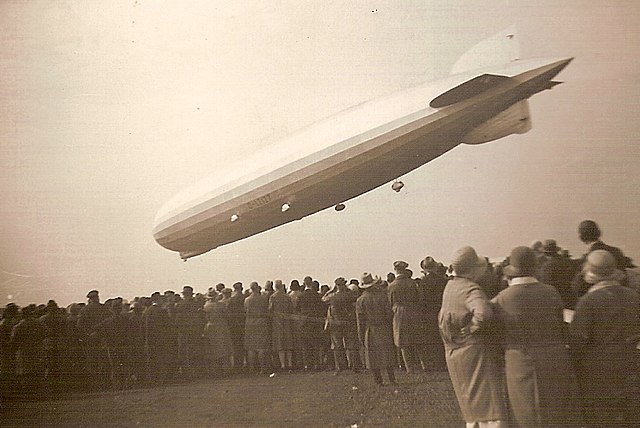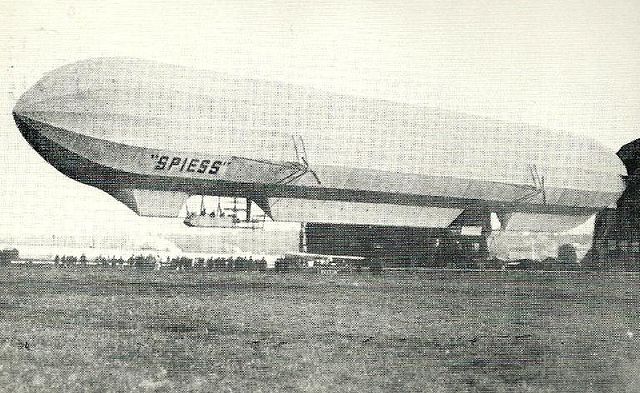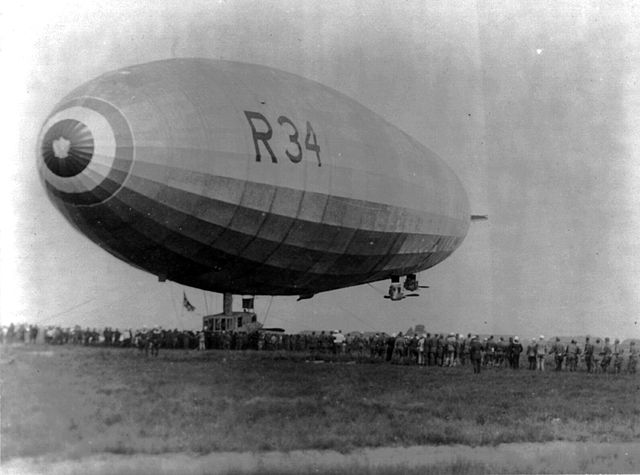LZ 127 Graf Zeppelin was a German passenger-carrying hydrogen-filled rigid airship that flew from 1928 to 1937. It offered the first commercial transatlantic passenger flight service. The ship was named after the German airship pioneer Ferdinand von Zeppelin, a count in the German nobility. It was conceived and operated by Hugo Eckener, the chairman of Luftschiffbau Zeppelin.
LZ 127 Graf Zeppelin
One of the engine nacelles, preserved in Zeppelin Museum Friedrichshafen
Gondola deck plan
Theo Matejko's drawing of the crew accommodation on the keel corridor from the first transatlantic flight
A rigid airship is a type of airship in which the envelope is supported by an internal framework rather than by being kept in shape by the pressure of the lifting gas within the envelope, as in blimps and semi-rigid airships. Rigid airships are often commonly called Zeppelins, though this technically refers only to airships built by the Luftschiffbau Zeppelin company.
Construction of USS Shenandoah (ZR-1), 1923, showing the framework of a rigid airship
LZ 1, the first successful rigid airship
The extended Spiess airship in 1913
The British R34 in Long Island during the first ever return crossing of the Atlantic in July 1919








